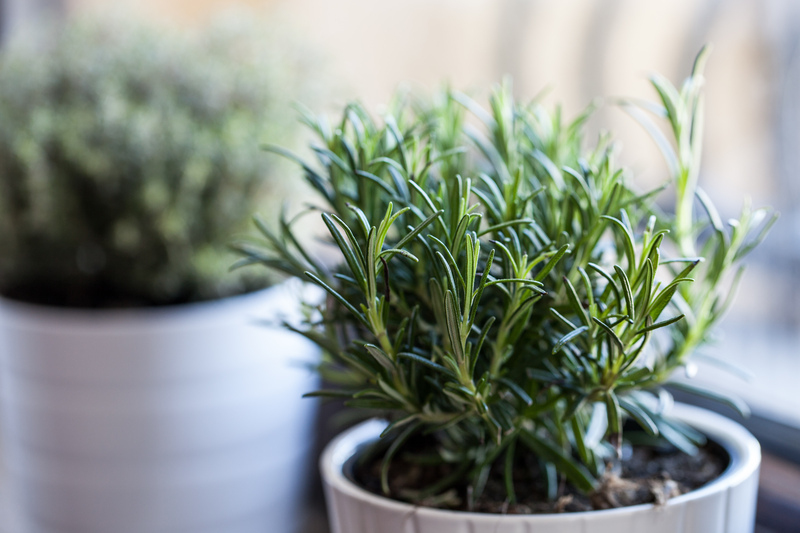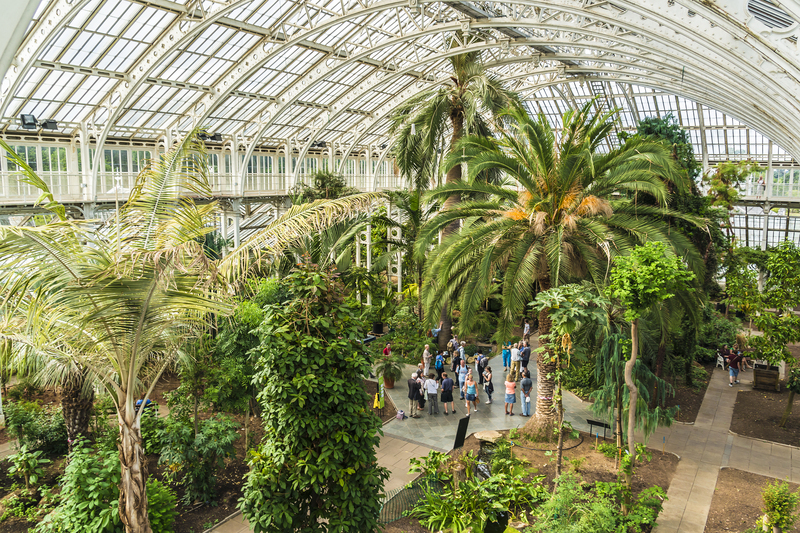Paws and Plants: A Guide to Gardening While Accommodating Dogs
Posted on 21/06/2025
Paws and Plants: A Guide to Gardening While Accommodating Dogs
Gardening is a beloved pastime for many, offering tranquility, beauty, and even fresh produce right in your backyard. However, for dog owners, achieving harmony between flourishing green spaces and the needs of their four-legged companions can be challenging. From ensuring plant safety to designing dog-friendly landscapes, balancing gardening with dogs involves thoughtful planning and creative solutions. In this comprehensive guide, we will explore how gardeners can nurture both their plants and pups, creating a vibrant, safe, and enjoyable outdoor environment for all.
Why Consider Dogs When Gardening?
Dogs are curious creatures, often exploring the world with their noses and paws. While this curiosity is endearing, it can spell trouble for both the garden and the dog if the right precautions aren't taken. Here are some reasons why integrating pet-friendly practices into your gardening routine is important:
- Safety: Many common garden plants are toxic to dogs if ingested.
- Plant Protection: Dogs may dig, trample, or chew plants, leading to garden damage.
- Hygiene: Dogs might choose soft garden beds for bathroom breaks.
- Exercise & Enrichment: The garden can be a source of healthy activity for your pet.
- Harmony: Smart design can help everyone-dogs and humans alike-enjoy the outdoor space.

Understanding Dog Behavior in the Garden
Before making changes, it's crucial to understand why dogs behave as they do in the garden. This insight will help you create a landscape that accommodates your dog's instincts while protecting your plants.
Sensory Exploration
Dogs use their senses to understand and interact with their environment. Sniffing, digging, chewing, and running are natural behaviors. These actions can sometimes lead to trampled flowers or disturbed vegetable beds.
Territory Marking
Dogs may mark territory along boundaries or prominent spots, affecting certain plants due to the high nitrogen in urine.
Digging and Chewing
Breeds like terriers love to dig. Dogs may also chew on stems, branches, or leaves out of curiosity or boredom.
Boredom and Energy Release
A bored dog is more likely to invent "games" that involve your plants. Integrating play zones and engaging activities can redirect this energy away from fragile garden areas.
Pet-Safe Garden Design Principles
Designing the garden with your dog in mind will create a happy balance between lush landscaping and animal activity. Consider these principles when planning your dog-friendly garden:
Create Clearly Defined Paths
Establishing routes for your dog makes the garden more navigable and less prone to random trampling. Gravel, flagstone, or mulch create comfortable surfaces for paws. Design paths around the perimeter for "patrol" behavior.
Designate a Digging Area
Channel your dog's love of digging to a specific spot by building a dog-friendly digging pit. Fill a sandbox or a section of the yard with soft, loose soil and bury toys or treats to encourage use.
Install Barriers to Protect Sensitive Beds
Use decorative fencing, raised beds, or dense shrubbery to separate prized plantings from canine curiosity. Short fences or garden edging can be effective deterrents without disrupting your landscape's aesthetics.
Provide Shade and Resting Spots
Dogs love to lounge in comfort. Install shaded areas with soft ground cover such as grass, mulch, or pet-safe plants to offer retreats during hot days.
Ensure Easy Access to Water
Keep a clean, fresh water source in the garden at all times, especially if your dog is active outdoors for long periods.
Choosing Dog-Safe Plants
Selecting non-toxic, hardy plants is fundamental for a garden that paws and people can share safely. Some common ornamental and edible plants can be harmful to pets, so careful selection is essential.
Avoid These Toxic Plants
- Oleander
- Azalea
- Sago Palm
- Foxglove
- Tulips (bulbs especially)
- Daffodils
- Autumn Crocus
- Castor Bean
- Lilies
For a more comprehensive list, consult your local extension office or the ASPCA's database of poisonous plants.
Dog-Friendly Plant Choices
Thankfully, many plants are safe for dogs and can even tolerate some paw traffic. Consider these varieties:
- Sunflowers - Hardy and non-toxic.
- Snapdragons - Colorful and safe.
- Roses - Watch for thorns but otherwise pet-friendly.
- Nasturtiums - Edible and decorative.
- Marigolds - Deterrent to some pests, non-toxic to dogs.
- Herbs - Basil, thyme, parsley (avoid chives and oregano).
- Ferns - Choose non-toxic varieties like Boston or Maidenhair fern.
- Camellias
- Purple Basil
Hardscaping and Mulches for Dogs
Materials matter in a pet-friendly outdoor space. The right surfaces can protect paws and plants while also making maintenance easier.
Paw-Safe Hardscaping Options
- Flagstone or Slate: Smooth and cool underfoot.
- Decomposed Granite: Soft and natural-looking.
- Bricks: Durable and easy to clean.
- Wooden Decking: Provides shade and a lounging area, but keep nails and splinters in mind.
Best Mulch for Dog Gardens
- Cedar Chips: Natural insect repellent and gentle on paws.
- Pine Straw: Soft and safe, though it breaks down faster.
- Rubber Mulch: Long-lasting and clean, but only if it's made from non-toxic materials.
Avoid cocoa mulch, as it contains theobromine, which is highly toxic to dogs.
Artificial Turf
For high-traffic zones, consider pet-safe artificial grass. It eliminates muddy paws and can withstand wear, but ensure proper drainage and cleaning.
Training Tips: Encouraging Good Garden Behavior
Alongside smart design, training is essential for fostering positive habits when dogs and gardens share the same space.
Basic Commands
- "Leave it": Teach your dog to leave plants and garden beds alone.
- "Stay": Direct your dog away from sensitive areas as needed.
Positive Reinforcement
Reward your dog when they use designated paths or their own play area. Treats, toys, and praise reinforce good choices.
Redirect and Distract
If your dog is caught digging, gently redirect them to their allowed space, or distract with an interactive toy.
Paw-Proofing Vegetable and Herb Gardens
Growing your own food is rewarding, but dogs' digging, running, or marking can pose risks to edible gardens.
Tips for Dog-Safe Edible Gardens
- Raised Beds: Use tall beds or planter boxes to keep produce out of paw's reach.
- Fencing: Low garden fences are effective physical barriers.
- No Chemical Pesticides: Opt for organic pest control to prevent accidental poisoning.
- Companion Planting: Use strong-smelling herbs like rosemary or mint to deter dogs.
- Consistent Training: Reinforce "off limits" policies for vegetable patches.
Watch Out for Unsafe Edibles
Some fruits and vegetables, while healthy for people, can be harmful to dogs. Avoid growing these where your dog can access them:
- Onions and Garlic
- Chives
- Grapes
- Tomato Plants (the green parts are especially toxic)
- Rhubarb
Dealing With Dog Urine and Plant Damage
Dog urine can leave brown spots on grass and damage delicate plants due to its high nitrogen content. Here's how to mitigate the effects:
Tips to Protect Your Lawn
- Water thoroughly where your dog urinates to dilute ammonia.
- Train your dog to use a designated, low-profile spot for urination.
- Choose hardy grasses like ryegrass or fescue over delicate varieties.
Keeping Dogs Safe From Garden Hazards
Gardens can harbor dangers beyond toxic plants. Take these precautions to ensure your pet's outdoor safety:
- Avoid sharp garden tools and store them securely.
- Keep fertilizers, pesticides, and compost bins out of reach.
- Watch out for slug and snail bait (highly toxic to dogs).
- Proof water features to prevent drowning accidents, especially with puppies or small dogs.
- Steer clear of thorny or spiky plants that may cause injuries.
Benefits of Gardening With Dogs
Gardening with dogs isn't only about compromise; it can also add joy, laughter, and a sense of connection. Shared gardens offer:
- Quality bonding time outdoors
- Physical exercise and mental stimulation for both pets and owners
- Healthier, naturally maintained gardens (dogs deter some pests and rodents)

Conclusion: Flourishing Gardens and Happy Paws
Creating a beautiful, thriving garden while accommodating your four-legged friend is not only possible, but deeply rewarding. By selecting dog-safe plants, designing intuitive landscapes, and reinforcing positive behaviors, you and your pet can enjoy every moment outdoors together.
Remember, successful gardening with dogs is a process of observation, adjustment, and love. With a bit of preparation and creativity, your backyard can become a haven for paws and plants alike--a place where everyone blossoms.
Frequently Asked Questions
Can I still have flower beds with dogs in the yard?
Yes! Use raised beds or decorative fencing to protect delicate flowers, and choose sturdy, pet-safe varieties.
What's the best mulch if I have dogs?
Cedar chips, pine straw, and non-toxic rubber mulch are excellent, but always avoid cocoa mulch due to its toxicity.
How do I keep my dog from digging up the garden?
Provide a designated digging area, reinforce garden boundaries with low fencing, and offer plenty of enrichment elsewhere.
Are vegetable gardens safe for dogs?
With supervision, raised beds, and careful plant choices, vegetable gardens can be safe. Just remember to avoid toxic crops like onions, grapes, and rhubarb.
Can I use organic fertilizers around dogs?
Organic fertilizers are safer than synthetics, but always keep products out of reach and avoid those containing blood or bone meal, as they may attract and harm dogs.
For more resources and plant safety databases, visit the ASPCA Plant Safety List.
By keeping both paws and plants in mind, your garden can become a paradise for all its inhabitants--flourishing, joyful, and safe.

